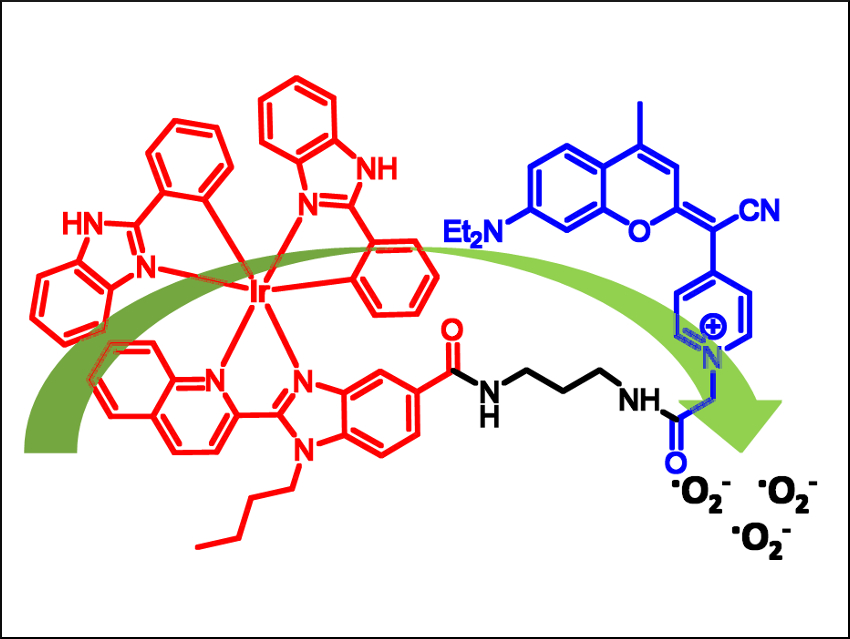Photodynamic therapy (PDT) for the treatment of cancer is based on the use of non-toxic compounds (photosensitizers, PS) which produce toxic reactive oxygen species that destroy tumor cells when the PS are subjected to light. However, they usually suffer from a strong dependence on the oxygen supply. This makes the treatment of deep hypoxic tumors (i.e., tumors with a low oxygen concentration) difficult.
José Ruiz, University of Murcia and Institute for Bio-Health Research of Murcia (IMIB-Arrixaca), Spain, Viktor Brabec, Institute of Biophysics of the Czech Academy of Sciences, Brno, Czech Republic, Vicente Marchán, University of Barcelona, Spain, and colleagues have developed a PS agent (pictured) in which a cyclometalated iridium(III) complex is attached to a far-red emitting coumarin dye. This combines the anticancer activity of IrIII complexes with the photophysical properties of organic dyes. The compound was synthesized by forming an amide bond between a carboxylic acid functional group of the iridium complex and a free amino group of the coumarin dye.
The conjugate has several interesting features for cancer phototherapy, such as aqueous solubility, high cellular uptake, and high photocytotoxicity even under low-oxygen conditions. The compound selectively generates highly cytotoxic superoxide anion radicals upon visible-light irradiation. In the researchers’ opinion, iridium-coumarin derivatives could lead to new fluorescent-PDT agents with potential applications in diagnosis and therapy.
- Towards novel photodynamic anticancer agents generating superoxide anion radicals: A cyclometalated Ir(III) complex conjugated to a far-red emitting coumarin,
Vojtech Novohradsky, Anna Rovira, Cormac Hally, Alex Galindo, Gloria Vigueras, Albert Gandioso, Marie Svitelova, Roger Bresolí-Obach, Hana Kostrhunova, Lenka Markova, Jana Kasparkova, Santi Nonell, José Ruiz, Viktor Brabec, Vicente Marchán,
Angew. Chem. Int. Ed. 2019.
https://doi.org/10.1002/anie.201901268




